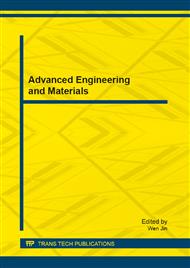p.14
p.20
p.26
p.31
p.35
p.42
p.49
p.55
p.61
Investigations of Oxy-Fuel Combustion Characteristics and Oxygen Permeation Process in a Stagnation Flow ITM Reactor
Abstract:
In this work, a modified two-step reaction kinetics model for methane-oxygen combustion is used to predict oxy-combustion characteristics and permeation rate characteristics inside a stagnation flow simple symmetric ITM reactor. New coefficients oxygen permeation equation model is introduced herein this work by fitting the experimental data available in the literature for a LSCF-1991 ion transport membrane. Using CH4 as fuel plus CO2 as sweep gas, the effects of reactivity is analyzed using the same sweep gases (CH4 plus CO2) is investigated here by comparing the same cases with and without considering reactions in the permeate side. Also the influences of the percentage of CH4 in the sweep gases mixture on the permeation and combustion processes are included in this work. It was found that the oxygen permeation flux increases with activating chemical reactions in the permeate side of the membrane and this is due to increased partial pressure driving force across the membrane surface as a result of disappearance of oxygen molecules in the permeate side because of combustion. Another reason for this is the increase in the membrane temperature which affects the activation energy of the membrane and so the permeation rate. More details about the models used and the oxy-fuel combustion characteristics in the permeate side of the membrane are included in the present study.
Info:
Periodical:
Pages:
35-41
Citation:
Online since:
February 2013
Authors:
Price:
Сopyright:
© 2013 Trans Tech Publications Ltd. All Rights Reserved
Share:
Citation:


